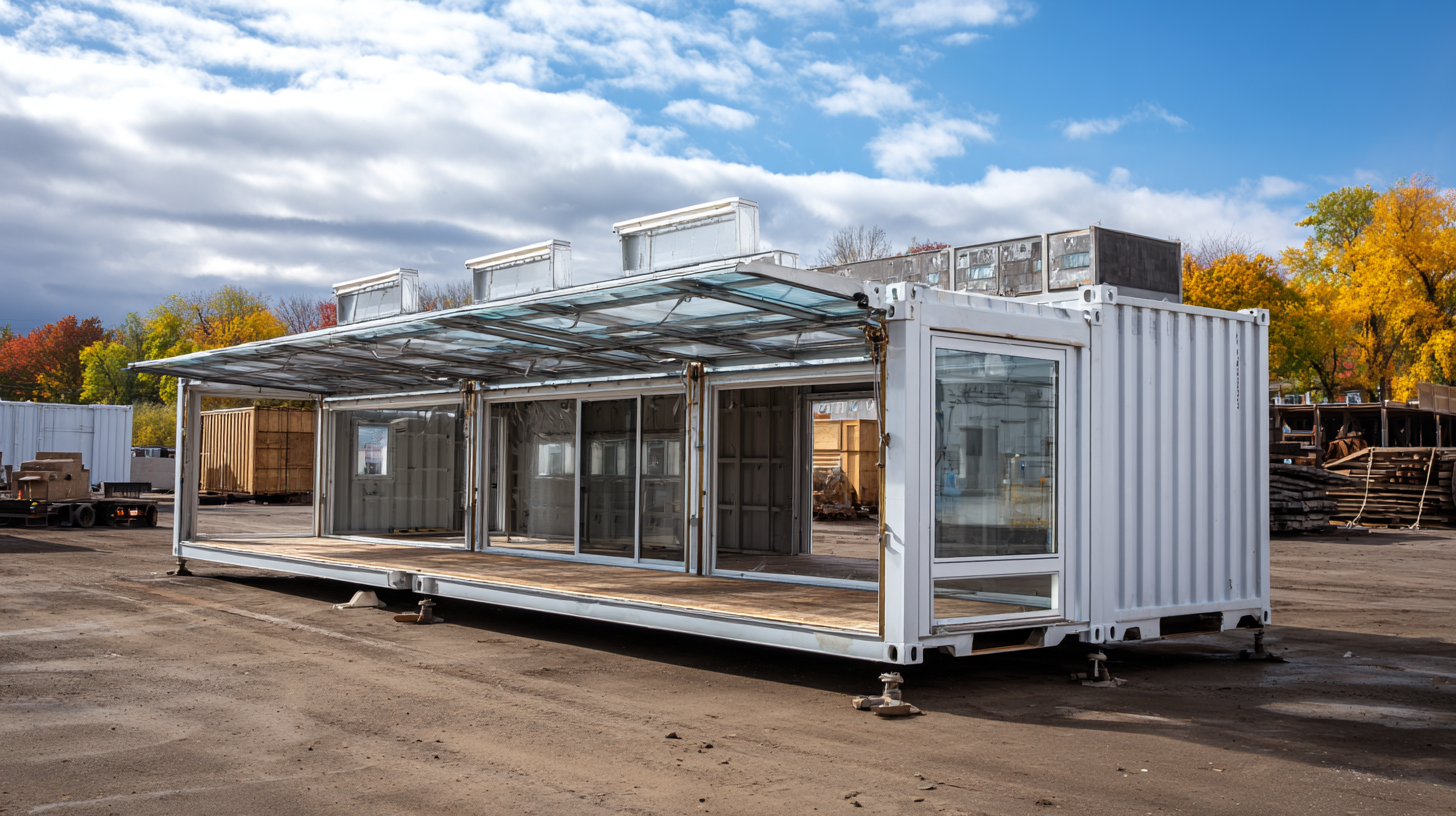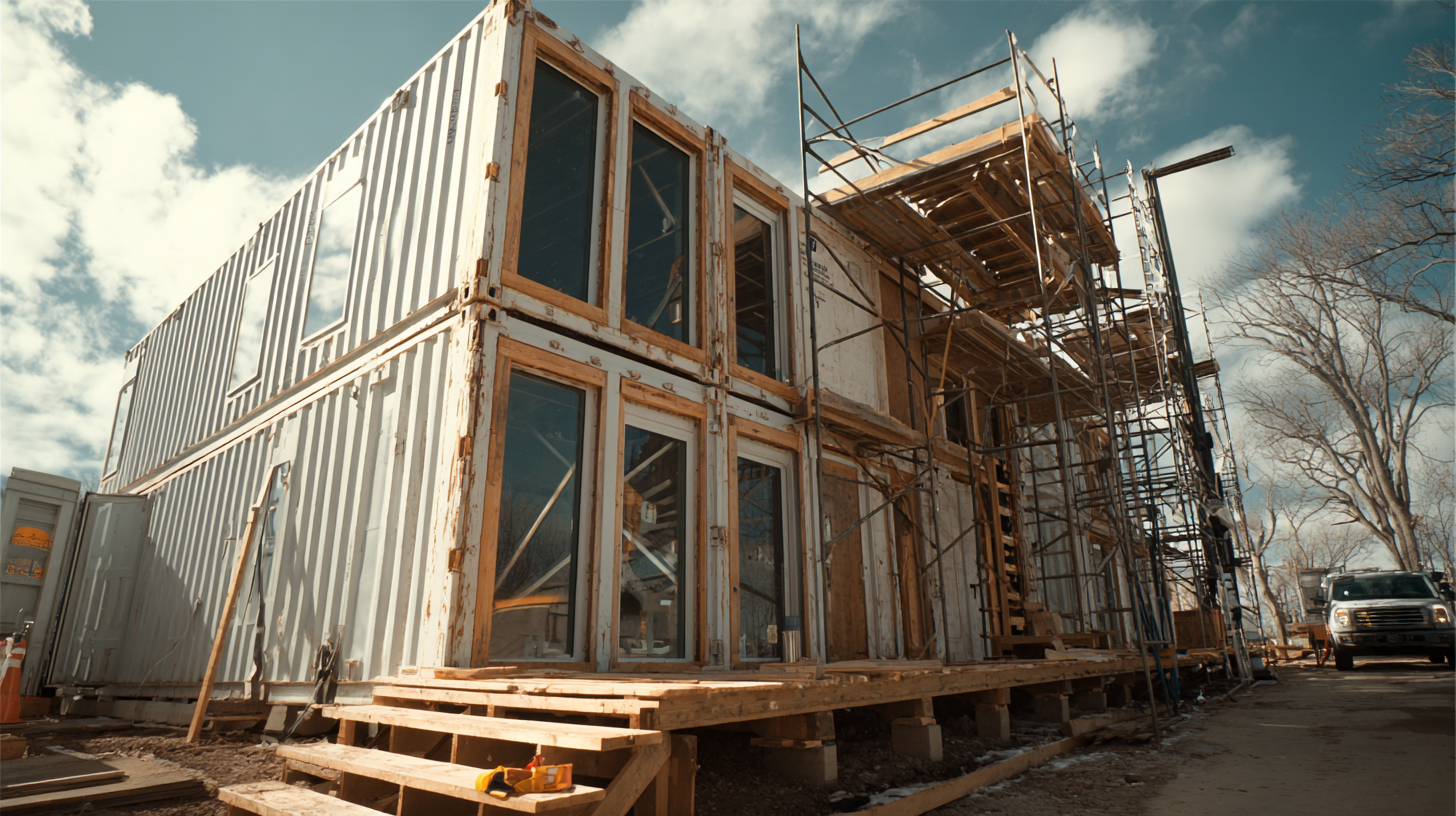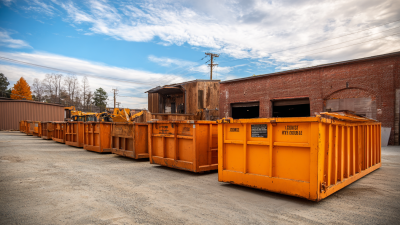Innovative Uses of Construction Containers That Transform Projects and Save Costs
In recent years, the construction industry has witnessed a significant paradigm shift towards the adoption of construction containers as versatile solutions that not only enhance project efficiency but also drive down costs. According to a report by Global Market Insights, the market for construction containers is projected to surpass $50 billion by 2026, demonstrating an increasing acceptance of modular building practices among developers and contractors.

These containers, once merely utilitarian storage units, are now being repurposed into innovative structures such as temporary offices, cafes, and even multi-family homes. This transformative approach not only reduces construction time and waste but also promotes sustainability by utilizing recycled materials.
With the ongoing demand for affordable housing and efficient project turnaround, leveraging construction containers is rapidly becoming a vital strategy for contemporary construction endeavors.
How to Repurpose Shipping Containers for Affordable Housing Solutions
Shipping containers, traditionally used for global trade, are increasingly being repurposed to address the urgent need for affordable housing. In cities like Phoenix and Atlanta, innovative projects are transforming these rugged steel boxes into sustainable living spaces. With the rise of homelessness and housing shortages, nonprofits and developers are embracing this alternative solution, allowing for expedited construction times and reduced costs. According to reports, a single shipping container can be converted into a functional living unit for approximately 10-15% less than traditional building materials, making it a viable option for communities in crisis.

Recent developments in Southern California highlight the potential of shipping containers to tackle local housing challenges. Various projects, such as the recently opened Legacy Village in Arizona, feature units crafted from repurposed containers, providing families with immediate shelter and a sense of community. Additionally, various studies indicate that these container homes can be engineered to meet or exceed building codes, ensuring safety and habitability without sacrificing modern comforts. As urban landscapes evolve, the integration of shipping containers not only offers a creative solution to housing shortages but also aligns with sustainability goals, making them a promising avenue for future developments.
How to Design Multi-Functional Spaces Within Construction Containers
The rising trend of using construction containers has opened up innovative avenues for designing multi-functional spaces that maximize both utility and efficiency. These versatile structures deliver cost-effective solutions for various projects, from temporary offices to permanent residential units. Their modular nature allows for easy customization, adapting to the specific needs of different applications.
When designing within construction containers, it's essential to prioritize functionality. Here are a few tips:
- Optimize Space: Utilize multi-functional furniture, such as foldable tables and built-in storage, to make the most of limited space. This approach helps to keep the interior organized while providing various uses for each area.
- Incorporate Natural Light: Strategically placing windows and skylights can lighten the atmosphere and enhance the living experience. Good lighting can also influence productivity in workspaces, making it a vital aspect of design.
- Create Open Spaces: Using open floor plans can provide flexibility in how spaces are used. For instance, a single container can serve as both a living room and workspace if designed thoughtfully. This adaptability is crucial for future-proofing the space against changing needs.
By implementing these strategies, construction containers can be transformed into efficient, multi-functional spaces that save costs while delivering quality solutions for diverse projects.
How to Incorporate Sustainable Practices in Container-Based Projects
The incorporation of sustainable practices in container-based projects is increasingly recognized as a pathway to not only reduce environmental impact but also to achieve cost efficiencies. According to recent studies, adopting sustainable design principles can significantly enhance project performance by minimizing waste and maximizing resource efficiency. For instance, the integration of recycled materials in construction containers can lead to reduced energy consumption by up to 30%, aligning with contemporary goals for greener building practices.

How to Create Vibrant Community Spaces Using Construction Containers
Construction containers are proving to be a versatile asset for transforming community spaces and reducing project costs. Cities across the United States are harnessing the potential of these structures to create vibrant areas that foster social interaction and engagement. For example, design initiatives in Milwaukee and Toukley showcase how local governments are integrating construction containers into community projects, turning them into art galleries and multifunctional spaces that attract residents and visitors alike.
One innovative approach is the use of modular container architecture, which promotes sustainable design while providing flexible space for community activities. By repurposing shipping containers, cities can quickly set up pop-up markets, community hubs, and even artistic installations. This not only revitalizes underused areas but also generates economic opportunities.
**Tips for Creating Vibrant Community Spaces with Construction Containers:**
1. **Engage the Community:** Initiate discussions with locals to understand their needs and desires for the space.
2. **Incorporate Art:** Collaborate with local artists to create unique, engaging designs that reflect the community's identity.
3. **Ensure Flexibility:** Design the spaces to be multifunctional, allowing for different types of events and uses throughout the year.
Utilizing construction containers in urban planning can lead to innovative solutions that breathe new life into communities while being cost-effective.
Innovative Uses of Construction Containers in Community Spaces
How to Optimize Container Architecture for Temporary and Permanent Structures
The use of construction containers in both temporary and permanent structures has gained immense popularity due to their adaptability and cost-effectiveness. To optimize container architecture, it is crucial to consider the structural integrity and layout. Employing modular designs not only maximizes space but also allows for easier expansion or modification, catering to the evolving needs of a project. Integrating insulation and energy-efficient systems can transform standard shipping containers into habitable and functional spaces, significantly reducing long-term operational costs.
Furthermore, strategic placement and orientation of the containers can enhance natural light and ventilation, contributing to a comfortable environment for occupants. Utilizing eco-friendly materials for interiors and exteriors can significantly minimize the environmental impact of container projects. This approach not only ensures sustainability but also appeals to a growing market of environmentally conscious consumers. By creatively leveraging the structural capabilities and aesthetic potential of construction containers, builders can generate innovative solutions that address both functional requirements and financial constraints, paving the way for a new era in architecture.



